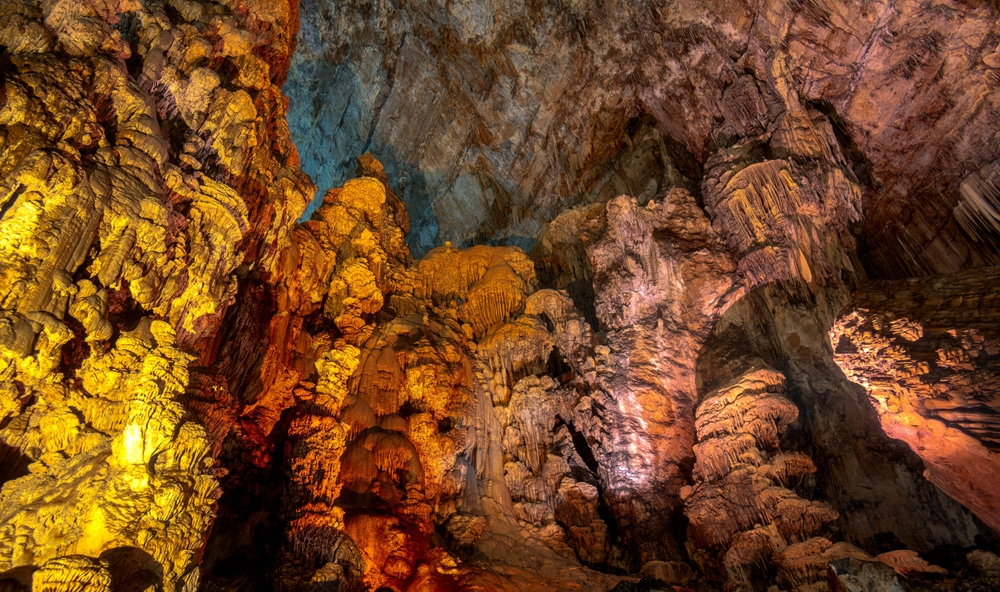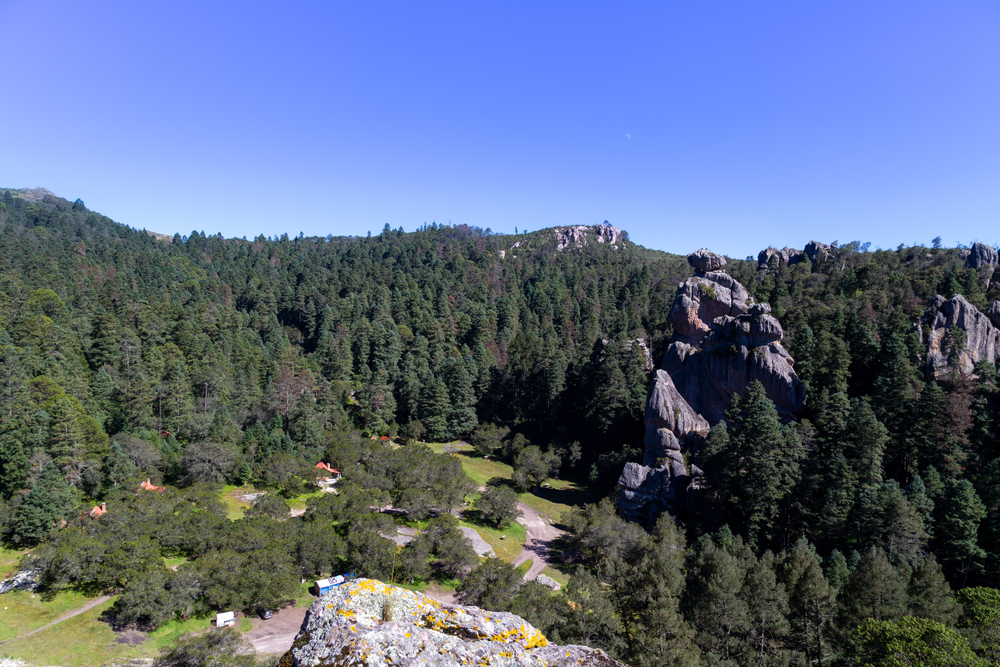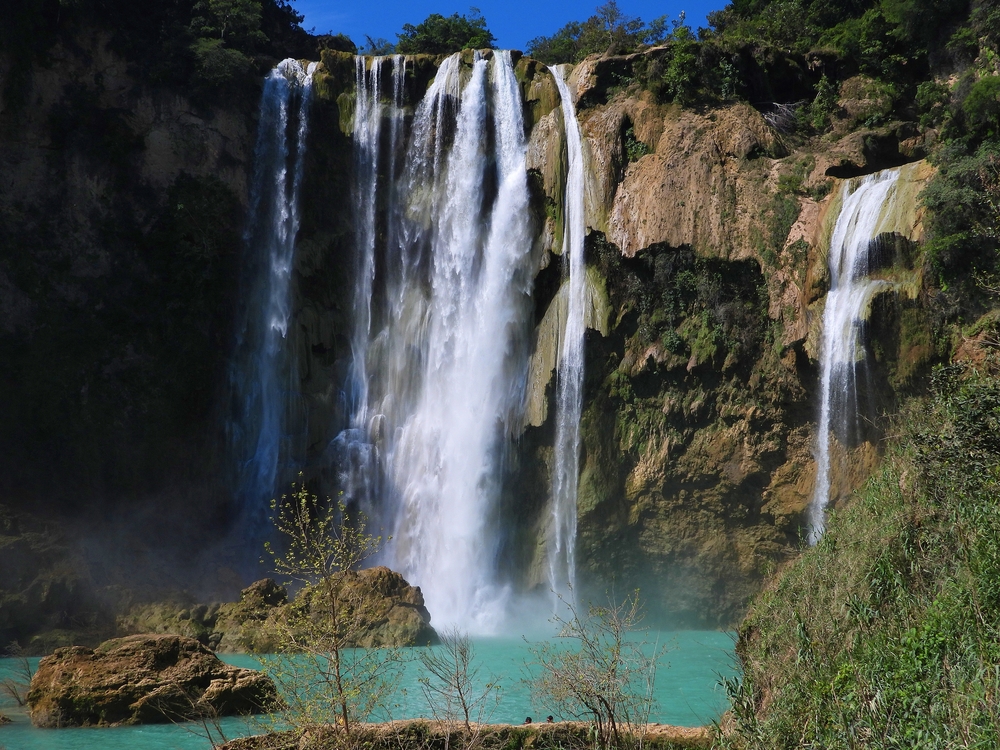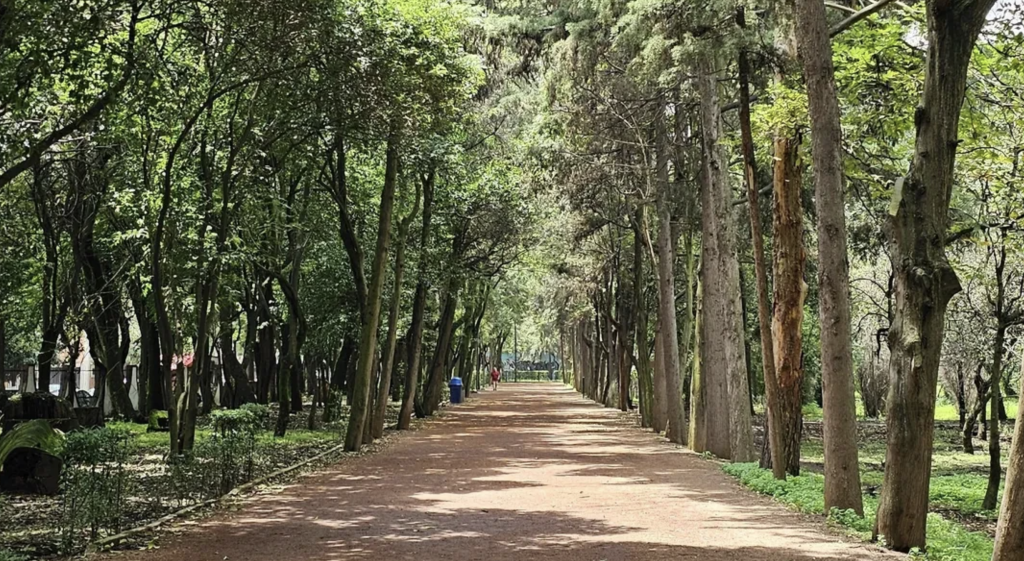Grutas de Cacahuamilpa Overview
Grutas de Cacahuamilpa National Park, known locally as Parque Nacional Grutas de Cacahuamilpa, is a protected area in central Mexico, spanning approximately 21.16 square miles (54.8 square kilometers). It is located in the state of Guerrero, near the border with Morelos, and is one of the country’s most famous cave systems.
The park is home to the Grutas de Cacahuamilpa Caverns, an extensive network of underground limestone caves formed by ancient geological processes. These caverns, some of the largest and most spectacular in the world, feature massive stalactites, stalagmites, and impressive rock formations that have been sculpted over thousands of years by the slow movement of water through the limestone.
The terrain within the park consists of a mix of rugged limestone mountains, deep canyons, and dense semi-tropical forests. The caves are the primary attraction, with their vast chambers reaching heights of over 260 feet (80 meters) in some areas. Above ground, the park is characterized by steep hills and rocky outcrops covered with a mix of deciduous and evergreen vegetation.
The surrounding forests include a variety of native trees, shrubs, and flowering plants, providing a lush green landscape that contrasts with the rocky underground world of the caverns. Rivers such as the Amacuzac flow through the park, creating additional scenic beauty and contributing to the cave system’s continued formation.
Grutas de Cacahuamilpa National Park is home to a variety of wildlife, although much of it remains hidden due to the dense vegetation and underground nature of the caverns. Mammals such as ocelots, armadillos, and white-tailed deer roam the park, while smaller creatures like bats make their homes within the cave system.
The caves themselves are inhabited by unique species adapted to the darkness, including cave crickets and blind fish. Birdwatchers can spot species such as the crested guan, trogons, and various types of parrots flying through the trees above the caverns. The biodiversity in and around the park highlights the ecological significance of this protected area, which serves as a refuge for many native species.
One of the most popular features of the park is the guided tour through the caves, which takes visitors deep into the underground chambers to witness awe-inspiring rock formations and learn about the history and geology of the caverns. Another attraction is the Grutas de Carlos Pacheco, a smaller but equally fascinating cave system within the park.
For those seeking adventure, activities such as rock climbing and rappelling are available on the park’s limestone cliffs, while hiking trails allow visitors to explore the forested areas above ground. The nearby Amacuzac River also offers opportunities for rafting and other water activities, adding to the park’s appeal for outdoor enthusiasts.
Conservation efforts within Grutas de Cacahuamilpa National Park focus on preserving both the underground and surface ecosystems. The caves are protected from excessive human impact by regulated tourism, ensuring that visitors can experience their beauty without causing significant damage.
Above ground, reforestation projects and habitat conservation initiatives help maintain the park’s natural balance. Despite these efforts, challenges such as deforestation in surrounding areas and water pollution from nearby human settlements pose ongoing threats to the park’s long-term health.
Nevertheless, the park remains a well-managed destination that successfully balances conservation with sustainable tourism, offering visitors a chance to explore one of Mexico’s most remarkable natural wonders.















































































